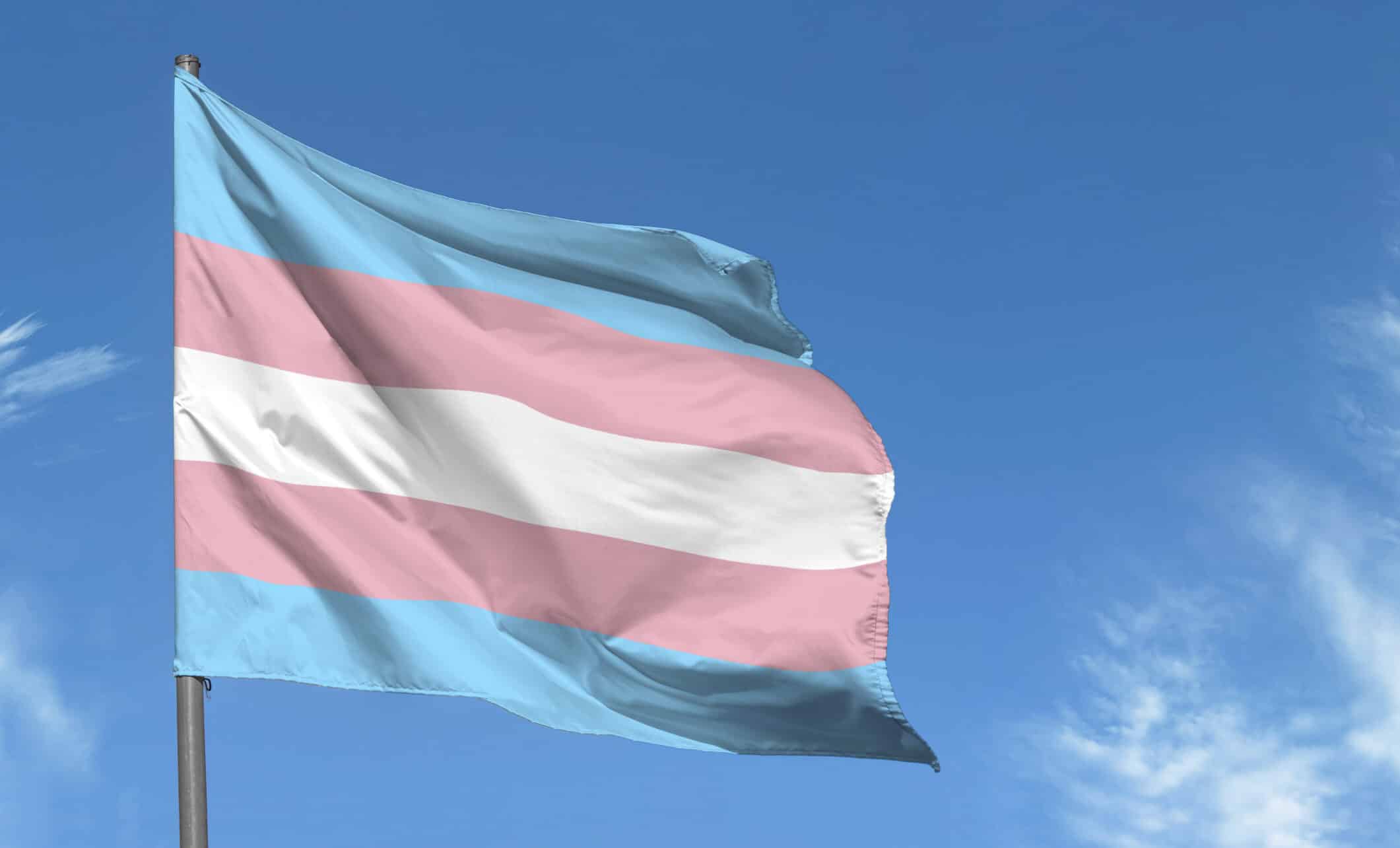Around six years ago I accepted a job working as head of communications for a start-up healthcare company providing therapy and hormones to the transgender community.
It didn’t really cross my mind to be concerned that I didn’t know anything about being trans. I had managed the communications for an airline, men and women’s grooming, utilities, aggregates, roofing and cladding – I knew comms and was confident that the skills I had would help me to navigate whatever challenges we faced along the way. And it’s fair to say that we faced some interesting challenges, but they were all classic comms hurdles: stakeholder engagement, crisis and issues management, reputation management, community engagement, media relations, internal communications.
Over the years working in this role, my team expanded to include trans and non-binary people, parents of trans youth, and other allies who wanted to support the community. The more trans people joined the company, the more I learned the importance of the role I had to play as an ally. Listening to the first-hand experiences of others and then using my comms skills to amplify their voices, highlight their concerns and give them a platform. I also learned that, while empathy is crucial, as a non-trans person you can never truly know what it feels like to be gender variant.
This learning now informs the work I do through TransMission PR, a communications consultancy specialising in transgender awareness and inclusion, and with D&I topping the agenda, there has never been a better time for companies to upskill in this area.
But where do companies even begin and how can they navigate a territory which is seemingly so contentious?
That dilemma appears so overwhelming for some, that instead of coming up with a plan, many companies, irrespective of how ‘live and let live’ an attitude they may have towards trans people, avoid the conversation altogether. Keeping their head below the parapet and instead honing their D&I skills in other areas they are more comfortable with. Their strategy becomes one of ‘getting a woman on the board’, ‘increasing black representation’, ‘supporting LGB’ – but stopping short of the T.
Trans inclusion and awareness begins with the basic understanding that, just as certain questions would be considered invasive if they were asked of a non trans colleague, the same rules apply for trans colleagues:
The problem with opting out of the conversation is that, without the positive voices adding their contribution to the mix, only negative voices can be heard and the narrative remains a toxic one.
According to a Stonewall survey from 2018:
- 51 per cent of trans people have hidden their identity at work for fear of discrimination.
- 34 per cent have been excluded by colleagues
- 21 per cent wouldn’t report transphobic bullying in the workplace
- 18 per cent don’t feel able to wear work attire representing their gender expression
- 15 per cent are still not addressed with their correct name and pronouns at work
- 12 per cent have been physically attacked by colleagues or customers
- 1 in three UK employers say they would be less likely to hire a trans person.
Trans people (which includes those who identify as non-binary) represent an estimated 1 per cent of the population, though given the variation with which people experience their gender, the exact figure is impossible to pinpoint. The 2021 census included questions related to gender for the first time and the results, when published, will no doubt provide further clarity in this area.
Companies have to do better and setting out a clear strategy in relation to trans inclusion is an excellent place to start.
To be truly authentic in their approach to inclusivity, brands need to lean in to their support of sexual and gender minorities even when trolls rear their ugly head, see this great example from Ford:
The good news
There are two pieces of good news. The first is that being trans inclusive isn’t rocket science. The second is that being inclusive of ALL sexual minorities is good for business.
A recent article in Forbes supports this claim, with research showing that LGBT-friendly businesses “tend to enjoy both higher profitability and higher stock market valuations.” The article attributes this increased financial performance directly to employee retention and satisfaction – known to be directly connected to productivity – which tends to be higher in businesses where diversity is explicitly promoted (irrespective of the nature of that diversity).
The best performers in this area are perhaps unsurprising: Apple, Coca-Cola, Google, Hewlett-Packard, Walt Disney and Goldman Sachs (although at the time of writing Disney has come under fire for failing to practice what it preaches).
It’s no longer enough to offer a great service or deliver a great product, brands are being increasingly held accountable for their stance on the political and social issues that today’s consumers face. Committing to LGBT+ equality is a powerful signal to stakeholders that a company cares about doing what is right.
According to the Office for National Statistics, more Britons than ever before are identifying as lesbian, gay or bisexual. In 2020 the community grew by 15 per cent to reach 1.4 million people.
Statistics taken from Community Marketing Inc and Harris Interactive show that:
- 55 per cent of LGBT consumers will choose to do business with companies that are committed to diversity/equal treatment of the LGBT community
- 70 per cent of LGBT adults stated they would pay a premium for a product from a company that supports the LGBT community
- 78 per cent of LGBT+ adults and their friends and family would switch to brands who are known to be LGBT+ friendly.
Other benefits include access to a wider pool of talent and the loyalty that comes with working for brands who stand up for what they believe: less employee churn, more goodwill, greater commitment and engagement all of which translate to increased productivity and better, more meaningful reputational benefits – win-win.
While being LGBT friendly is good for business, there is also the important consideration of the damage that can be done by failing to support trans colleagues in the workplace. This is something which Jaguar Land Rover learned the hard way in 2020, when it was ordered to pay £180,000 to a genderfluid engineer after what has been described as a “relentless campaign of harassment”.
And that’s just the headline cost, throw in legal fees and the cost to repair the damage to the company’s reputation and we are talking serious money. Furthermore, now that there is a precedent, it’s safe to say companies can expect more of the same if they fail to support their trans colleagues.

A transfeminine executive meeting with a non-binary employee. Picture courtesy of Broadly from VICE.
So what can companies do from a practical perspective?
The most important thing is to approach trans inclusion in an authentic, meaningful, and accountable way, which means rolling out a rainbow flag once a year to mark Pride, isn’t going to cut it. Indeed, as consumers become savvy to the notion of rainbow-washing, Pride tokenism is increasingly being called out.
Here are some ways in which companies can proactively embed trans inclusion into their D&I strategy:
- Have a clear position on trans inclusion as well as a zero tolerance approach to transphobia. Make that position clear to all employees.
- Examine existing communications, are they trans inclusive?
- Run awareness sessions and workshops to educate employees and empower them to be conscious and considerate of gender minorities.
- Hold panel discussions to engage employees on the subject (do NOT rely on trans employees to educate team members).
- Create policies so that when trans people come out in the workplace there is a blueprint for how to support them.
- Consider adopting forward thinking policies in relation to healthcare benefits and guidelines for gender transition.
- When developing supportive initiatives, consider how they can have a lasting positive impact on LGBTQ+ communities.
- Take part in national days such as Transgender Day of Visibility (March 31st), IDAHOBIT (International Day Against Homophobia, Transphobia and Biphobia May 17th) and Transgender Day of Remembrance (November 20th) – and Pride as part of a wider programme of activity.
- Lead by example and advocate for LGBTQ+ people.
When it comes to trans inclusion, it’s important to remember that it is not a case of giving birth to a fully formed adult. No one expects perfection on all fronts from the outset. Having said that, it is essential to begin somewhere and there are plenty of resources available to help.
Companies must spend time honing their skills, tailoring and improving their approach with every experience. Watch – and learn – from other more established companies who are working in this field and it will quickly become clear that there is plenty that can be done to ensure that trans people feel seen, alongside their LGB peers.
Aby Hawker is founder of TransMission PR a communications consultancy specialising in trans inclusion and awareness.
Subscribe
Sign-up to receive our newsletter





